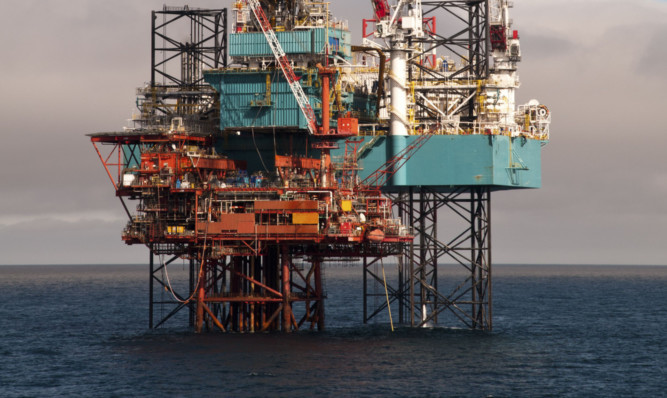
Is Scotland on the verge of a new oil boom?
A potential second oil boom for Scotland has moved a step closer after SNP ministers ordered a wide-ranging review of reserves off the country’s west coast.
The Sunday Post last year revealed how test drilling in the Firth of Clyde was blocked by Westminster defence chiefs in the 1980s because of fears it would interfere with a training and exercise area for nuclear submarines.
Now the Scottish Government plans to team up with top academics and experts to examine the potential for oil and gas discoveries in the seas around Arran.
Despite its huge potential, just 20 exploration wells have been drilled to the west of the Scottish mainland, compared with more than 3,000 in the North Sea and west of Shetland.
Other areas which will now be examined include the Solway Firth, North Channel, the Sea of the Hebrides and, in the longer term, Rockall.
The news comes only days after it emerged one of the North Sea’s biggest untapped resources Bently, east of Shetland may produce oil for more than three decades.
Energy minister Fergus Ewing said: “Stimulating oil and gas activity to the west of Scotland could create employment and further increase the longevity of the industry in the country.
“Any activity will be supported by Scotland’s world-class indigenous supply chain with 40 years of experience in the North Sea.”
In the autumn the Scottish Government will co-host a workshop with Heriot-Watt University’s Institute of Petroleum Engineering to examine the potential for conventional oil and gas resources in the waters off the west coast.
SNP ministers hope that if future exploration of the inner seas to the west of the Scottish mainland proves successful, it could lead to an examination of a vast under-explored area towards Rockall.
It is hoped the survey work will stimulate demand from oil firms to press for new test drilling.
The issue of oil has dominated the referendum battle with the Scottish Government accidently releasing figures which showed tax revenues from North Sea reserves had dropped by £1.5bn over the last year.
But just days later it was revealed an oil field due to begin production east of Shetland could produce more than 300 million barrels of oil over the next 35 years.
Speculation has also been rife that the true scale of reserves around Shetland have not been disclosed.
Licensing for test drilling and exploration in Scotland’s seas is currently reserved to Westminster but this would transfer to the Scottish Government if there is a Yes vote in next month’s referendum.
However, the work to examine oil reserves off the west coast will still go ahead even if there is a No vote.
John Howell, Professor of Petroleum Geology at the University of Aberdeen, said: “The offshore area to the west of Scotland includes several major basins with hydrocarbon potential.
“While over 3,000 exploration wells have been drilled in the North Sea and West of Shetland, only around 20 have been drilled to the west of the Scottish mainland.
“This provides significant future potential which can only be appraised with detailed scientific study.”
Last year, The Post revealed how the Ministry of Defence was prepared to “pull out all the stops” to prevent any North Sea-style bonanza in the Firth of Clyde.
Declassified UK Government papers from the 1980s showed ministers at the time said oil firms were “expecting something exploitable” following a series of geological surveys.
But MoD bosses objected to BP installing test drilling rigs in the seas south of Arran because of fears it would interfere with nuclear subs.
In June Lord Heseltine, Defence Secretary at the time, confirmed to the Post his Tory government did block the move.

Enjoy the convenience of having The Sunday Post delivered as a digital ePaper straight to your smartphone, tablet or computer.
Subscribe for only £5.49 a month and enjoy all the benefits of the printed paper as a digital replica.
Subscribe